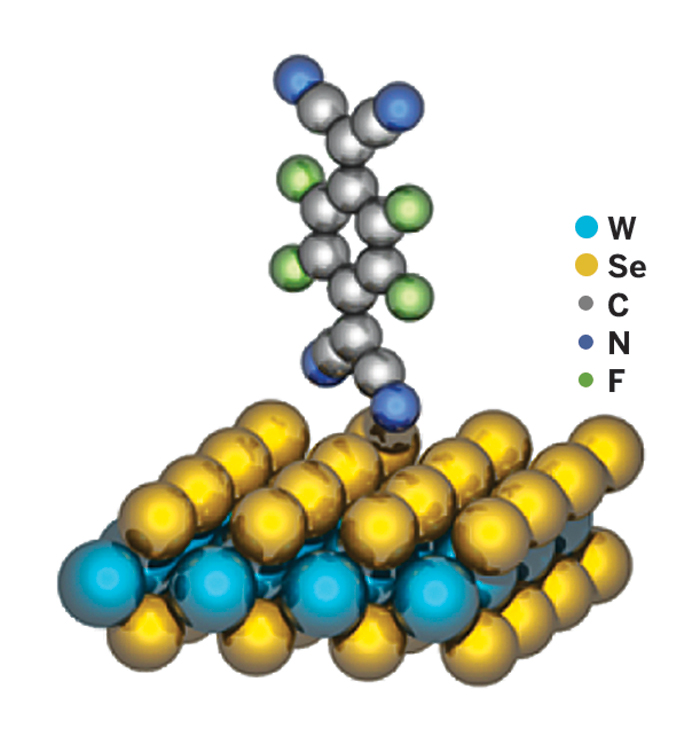Advertisement
Grab your lab coat. Let's get started
Welcome!
Welcome!
Create an account below to get 6 C&EN articles per month, receive newsletters and more - all free.
It seems this is your first time logging in online. Please enter the following information to continue.
As an ACS member you automatically get access to this site. All we need is few more details to create your reading experience.
Not you? Sign in with a different account.
Not you? Sign in with a different account.
ERROR 1
ERROR 1
ERROR 2
ERROR 2
ERROR 2
ERROR 2
ERROR 2
Password and Confirm password must match.
If you have an ACS member number, please enter it here so we can link this account to your membership. (optional)
ERROR 2
ACS values your privacy. By submitting your information, you are gaining access to C&EN and subscribing to our weekly newsletter. We use the information you provide to make your reading experience better, and we will never sell your data to third party members.
Materials
The Magnetic Pull Of Ultralow-Power Computing
Electronic Materials: Switches made of nanomagnets can perform a basic logic operation while consuming very little power
by Katherine Bourzac
February 2, 2016

Computers perform complex calculations using billions of tiny electronic switches called transistors, which are organized into circuits and memory. Replacing these transistors with magnetic switches could enable more energy-efficient computers. Magnets have shown their worth in energy-efficient memory technologies, but they haven’t been used for processing. Researchers have now demonstrated that this is possible, combining low-power magnetic switches to perform a simple information processing step (Nano Lett. 2016, DOI: 10.1021/acs.nanolett.5b04205).
On a computer chip, each transistor can be switched between an on and off state, encoding a 0 or a 1—known as a bit. Nanomagnets can be switched between two states, too. One way to do this is to apply an electric field to flip the magnetic field’s orientation, but that takes 1,000 times as much energy as switching an electronic transistor, says Jayasimha Atulasimha, a mechanical engineer at Virginia Commonwealth University.
But another approach to switching the nanomagnet’s field is to apply a mechanical stress. This has been used to demonstrate magnet-based computer memory. Putting the magnets under strain to do the switching requires just one-hundredth the energy of a conventional transistor.
Atulasimha’s group wanted to demonstrate that these low-power, strain-gated nanomagnets could be used for information processing, not just memory. So Atulasimha and colleagues made a device that uses multiple nanomagnets to carry out a simple information processing problem. They deposited cobalt disks about 200 nm across onto a 0.5-cm-thick layer of a piezoelectric material called PMN-PT. A small electric field causes the piezoelectric layer to expand or contract, depending on the design. This pulls on or compresses the nanomagnet, changing its shape slightly, and flips the orientation of the magnetic field. Turning off the field flips it back.
The group used a chain of three nanomagnets to make a basic logic device called a NOT gate, one of the essential elements for doing digital computation. It’s nowhere near the full complement of logic operations needed to make a computer, but an important first step. Their magnetic logic device uses about 450 attojoules per operation. The researchers calculate that future systems using smaller nanomagnets and a thinner piezoelectric layer would use only 1 attojoule per operation.
Kang Wang of the University of California, Los Angeles, who works on magnetic memory technologies, says he’s impressed with what the group has done. “This is nice progress in using strain to move information,” he says. He expects one challenge will be making sure that the piezoelectric layer used for these devices is as thin as possible, because the more flexible the substrate, the less it will hold back the application of stress on the magnetic bits. Wang notes that a rubber band is much harder to stretch if it’s glued to a piece of wood. Atulasimha says they’re currently minimizing the thickness of the substrate.
.





Join the conversation
Contact the reporter
Submit a Letter to the Editor for publication
Engage with us on Twitter